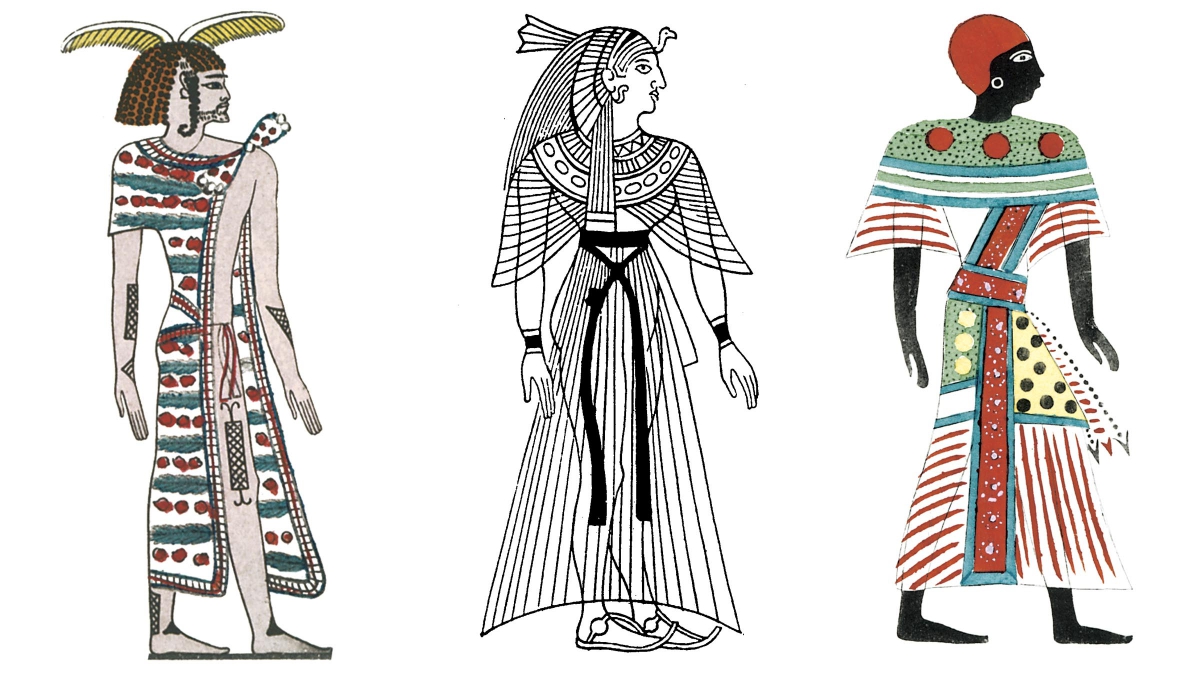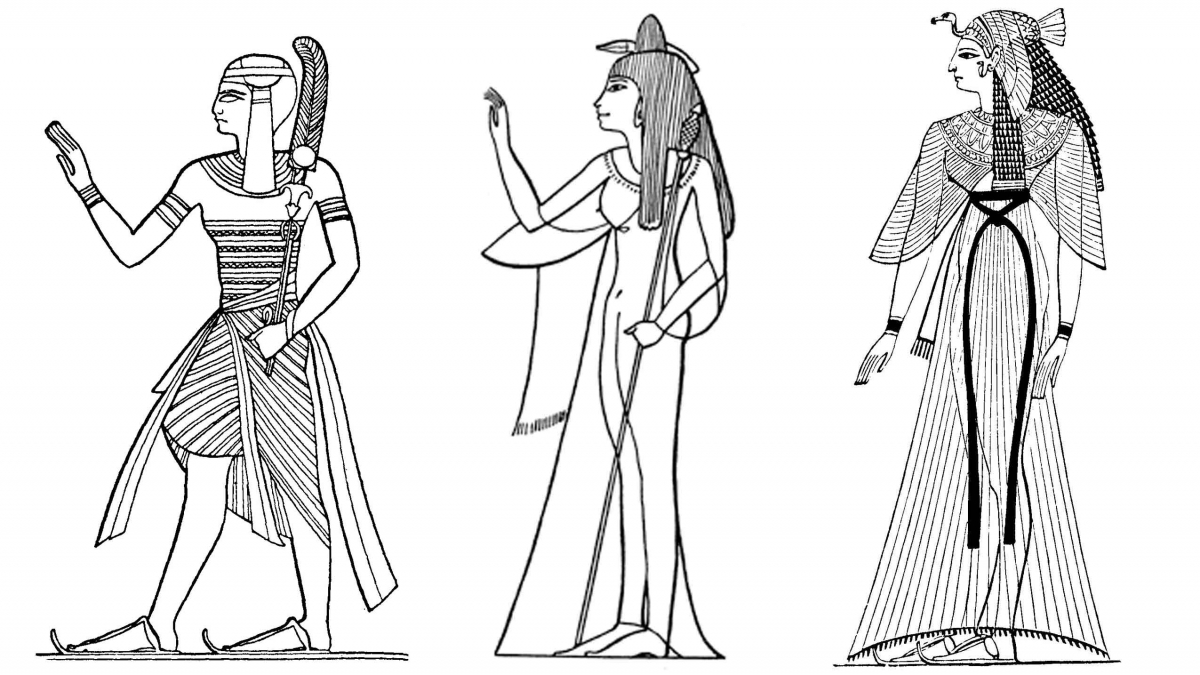Textiles
All ancient Egyptians, rich or poor, male or female, wore linen clothing.. The lists of offerings in tombs almost always mentions linen as something that the deceased would need in the next world. There are many steps required to make linen from flax. Great skill was required to turn the stems of flax into fine cloth. This craft goes back to the beginnings of Egyptian culture.
Unfortunately, clothing is not often preserved from Ancient Egypt, and, until recently, archaeologists and Egyptologists were less interested in the textile remains found in tombs than in other materials. Now, however, serious attention is being paid to textile production and to the garments that the Egyptians wore.

Linen clothing was almost always white or off-white. Differences in status were shown by the fineness of the cloth. The finest, 'royal linen' was almost diaphanous, and much softer and whiter than other linen. Many of the finest garments would have been bleached white in the sun, and enhanced with pleating or fringes.
Though white was the predominant colour, clothing found in excavations show that coloured threads were woven into cloth to make stripes. Kings and queens wore clothes that were bright with woven patterns of coloured threads, and embroidery. Dyed leathers were also used in shoes and in belts. Beadwork could also be used to brighten clothes and add details. Many of King Tutankhamun's clothes were placed in his tomb, and though these garments are often in very poor condition due to rough handling by robbers thousands of years ago, the remains show evidence of tapestry weave and intricate beading. The clothing of the rich was probably much more colourful than we think.
Egyptian art from the Age of the Pyramids shows people wearing very light clothing; nothing at all for children, a kilt for men, and tight-fitting, sleeve-less dresses for women. These images may represent a sort of 'formal portraiture.' Clothing that has been found in tombs looks much more like modern Egyptian clothing, very similar to the long loose sleeved robe called a galabiyya. If Egyptian women had really worn dresses as tight as those shown on statues and reliefs, they would not have been able to sit down, or even to walk.
Ancient Egyptians often wore much warmer clothing than we see in the paintings from tombs and temples. At night, it can be very cold in Egypt, and warm woolen cloaks were available to deal with the chill of the night. One child's garment has sleeves that could be easily added or removed, depending on the weather.
The short, formal kilts that men appear to be wearing in most statues and reliefs was a part of the actual wardrobe. These kilts are sometimes very intricately pleated, showing that the men who wore them had servants to take care of their clothes. No one is quite sure how the Ancient Egyptians pleated linen, but two ways have been suggested: the cloth could simply be folded, accordion style, then tied, and wetted. When the cloth was dry and the ties taken off, the cloth would have had pleats. Another possibility is that cloth was pressed onto wooden boards that had furrows in them, and a kind of glue, sizing, was painted on to the linen to make it hold the pleats.
Some of the more interesting aspects of Egyptian clothing have to do with beadwork. Beautiful, complex beadwork has survived from all ages of Egyptian civilization. Nets of beads were sometimes worn over women's dresses, to add colour and perhaps sound as the beads rustled at the edges of the dress. Fancy beadwork also decorates men's kilts.
What was the status of the people who made clothes ? During the Age of the Pyramids, most cloth seems to have been woven by women, who could sell whatever cloth was not needed by their own families. Good weaving was an admired skill. A relief from the tomb of Akhethotep shows women being paid for their cloth with gold necklaces!

